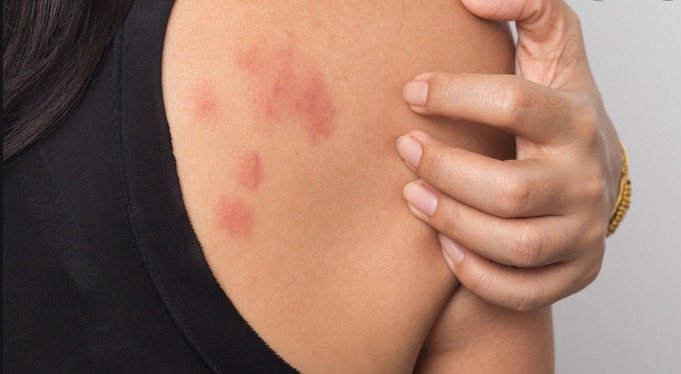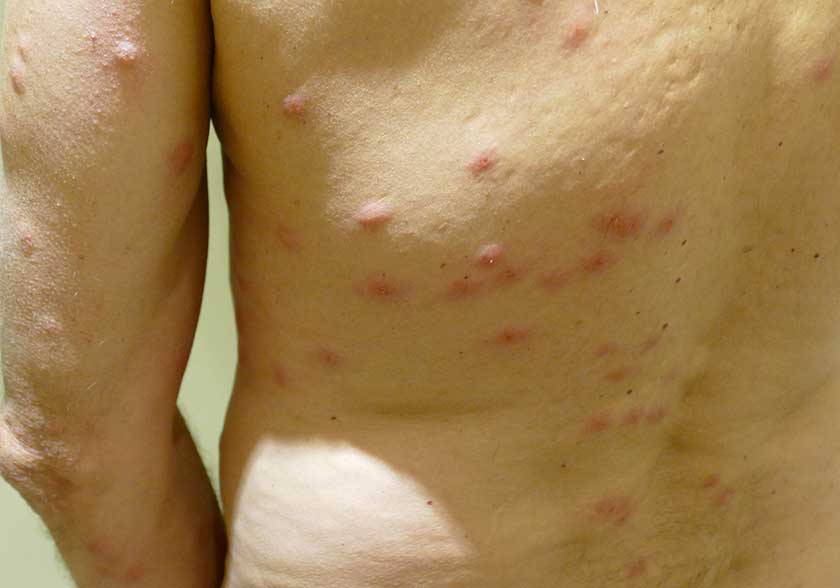

Bed bugs FAQs.Īmerican Academy of Dermatology. doi:10.1001/jama.2009.405Ĭenters for Disease Control and Prevention. Bed Bugs ( Cimex lectularius) and Clinical Consequences of Their Bites. Studdiford JS, Conniff KM, Trayes KP, Tully AS. Bed bugs: clinical relevance and control options. Treasure Island (FL): StatPearls Publishing.ĭoggett SL, Dwyer DE, Peñas PF, Russell RC.

Chickenpox: This viral infection causes red blisters anywhere on the body and often happens along with flu-like symptoms.Įnnis AC, Pearson-Shaver AL.What are bed bugs Bed bugs ( Cimex lectularius) are tiny insects that bite people and animals to get blood for food. Antibiotic reactions: Hives or patchy rashes may develop in the days after taking an antibiotic. Overview Bed bugs are tiny insects that hide where you sleep and feed on your blood.Bed bug bite reactions dont always appear immediately. Staph infection: This infection happens when the bacteria Staphyloccocus gets inside the body through a break in the skin, such as from a cut or wound. Bites normally look like small, flat or raised areas that may become inflamed, itchy, red or blistered.Eczema can happen anywhere on the body but often concentrates along the backs of the knees or creases of the elbows. Eczema (atopic dermatitis): It's often produces red, dry, scaly patches that may get crusty.An allergic reaction may also be secondary to the bedbug bites. The red rashes are concentrated in body areas that came in direct contact with the irritant or allergen. It can also be caused by plants, such as poison ivy.
BED BUG BITES NOT ITCHY SKIN
Allergic rashes or contact dermatitis: These skin reactions can happen after you've come in contact with an irritant, such as perfume or chemicals in soaps, detergents, body sprays, or lotions. Scabies: This infection from a parasitic mite is intensely itchy and is spread through skin-to-skin contact with an infected person The mites burrow under the skin to lay eggs, often in skin folds, which cause bumpy rash patches when they hatch. If you've recently spent time outdoors, especially near standing water or in wooded areas or high grass, mosquitos or ticks may be the source. If you have pets or the bites are mostly concentrated on the lower body, such as the feet and ankles, you'll want to inspect for fleas. Flea, mosquito, tick, chigger, or spider bites: All of these insect bites are hard to distinguish from bedbug bites. Some people have no reaction and dont even develop bite marks. Very often, people mistake carpet beetle rashes for bed bug bites. Bed bug bites affect everyone differently. Their larvae often invade fabrics such as organic fabric clothes, carpets, curtains, and even woollen mattresses. While carpet beetles don’t bite, they can cause allergic reactions to human skin with their hairy legs. These bites are usually prominent on the back of your neck or behind your ears. Lice bites are intensely itchy and may sometimes have traces of blood. Spider bites resemble a mosquito, except welts sometimes appear purplish and painful. While spiders don’t feed on human blood, the possibility of being bitten at night isn’t unusual these creatures are nocturnal and fond of weaving webs under your bed. That’s why seeing red blotches with puncture spots around these areas is most likely because of fleas. They also target your elbows and armpits. Flea bites usually occur in your lower extremities, like your feet and ankles. :max_bytes(150000):strip_icc()/bed-bug-bites-overview-2633482_v2-f8bfc57491af4e7a93307ec27a0d9652.png)
They’re incredibly itchy and sometimes painful. Mosquito bites usually appear as reddish, swollen welts scattered around your body.




:max_bytes(150000):strip_icc()/bed-bug-bites-overview-2633482_v2-f8bfc57491af4e7a93307ec27a0d9652.png)


 0 kommentar(er)
0 kommentar(er)
